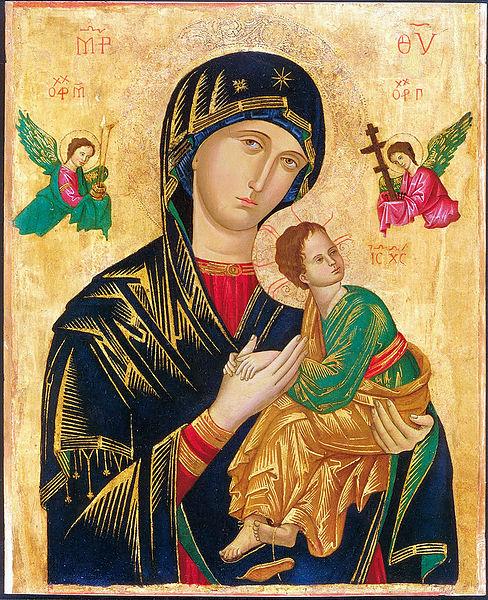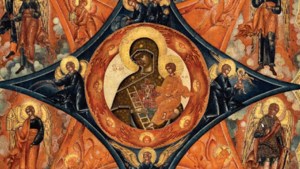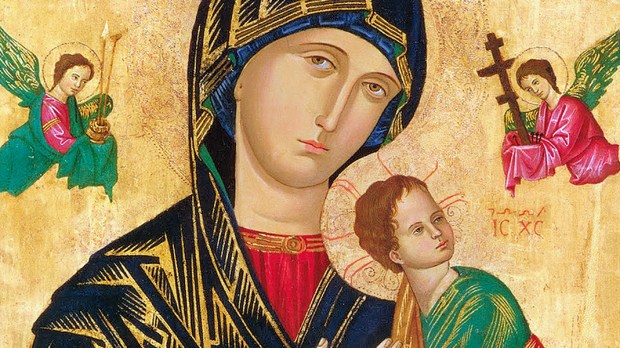After years of not paying much attention to it, the Our Lady of Perpetual Help icon has become my favorite Christmas image this Advent.
The image is a 13th-century Byzantine icon currently housed in Rome’s Church of St. Alphonsus. It depicts the Madonna and child in the center and the archangels Michael and Gabriel on either side of him.

This year, I am finding that the very things that put me off about it in the past are what draw me to it now, revealing the full meaning of Christmas.
The angels aren’t like gnats — they are reminders of the real power of Christmas.
The angels in the picture always reminded me of bugs bothering the Blessed Mother. But of course they aren’t — they are messengers from God carrying a cross and nails.
They are reminders that Jesus was born in Bethlehem in order to die for us at Calvary — and his death wasn’t an easy thing that he did effortlessly because he was truly God. It was a painful thing that frightened him because he was truly man. And as a true man, he needed support and encouragement. He got that from his mother, and so can we.
Jesus looks like an infant and older person, both at once, reminding us that Christmas is for everyone.
Jesus in the icon, following the customs in the Eastern Churches, does not look babyish. This is a good reminder of two things: First, that even as an adult, his relationship with his mother endured; and second, that he invites us into that relationship with her no matter what age we are.
The movie The Passion of the Christ expresses the same idea when Mary’s very presence gives Jesus the strength to face the Passion — in one case flashing back to a scene when Mary comforted him as a child.
In the icon he grips her hand in fright at the signs of his Passion, a habit that would have started on the first Christmas night — and a habit that can start for us right now.

Read more:
In Orthodox iconography, the Virgin Mary is also the Burning Bush
The unsmiling Mary reminds us that Christmas is deeper than the superficiality we dress it with.
I have seen versions of the icon in which an artist puts a smile on Mary’s face. I understand why they do that. Her face looks hard and off-putting to we 21st-century people who are used to smiling celebrities and curated profile pics.
But the people of most times and places in the world would recognize that look: It’s the expression of a woman who knows life is hard and the future has more difficulty in store, but who looks to heaven for hope that she knows will come.
It’s the look your mother had each December while she was spending all of that time making Christmas bright for you, time you never thought about.
The falling sandal reminds me that there is a greater one than John the Baptist here.
The falling shoe in the icon is sometimes attributed to Jesus having run quickly to Mary in fright, and sometimes said to show that he is not tied to this earth because he is also divine.
For me, it always makes me think of John the Baptist, who famously repeats during Advent that one is coming “whose sandal strap I am not worthy to untie.” I like remembering that Mary was worthy to do that, in one sense, anyway — and had to tie them on, also.
At Christmas, it reminds me that while the most important gift we get is a glorious savior, a secondary gift we get is a great mother.
Christmas is the perfect time to consecrate yourself to her.

